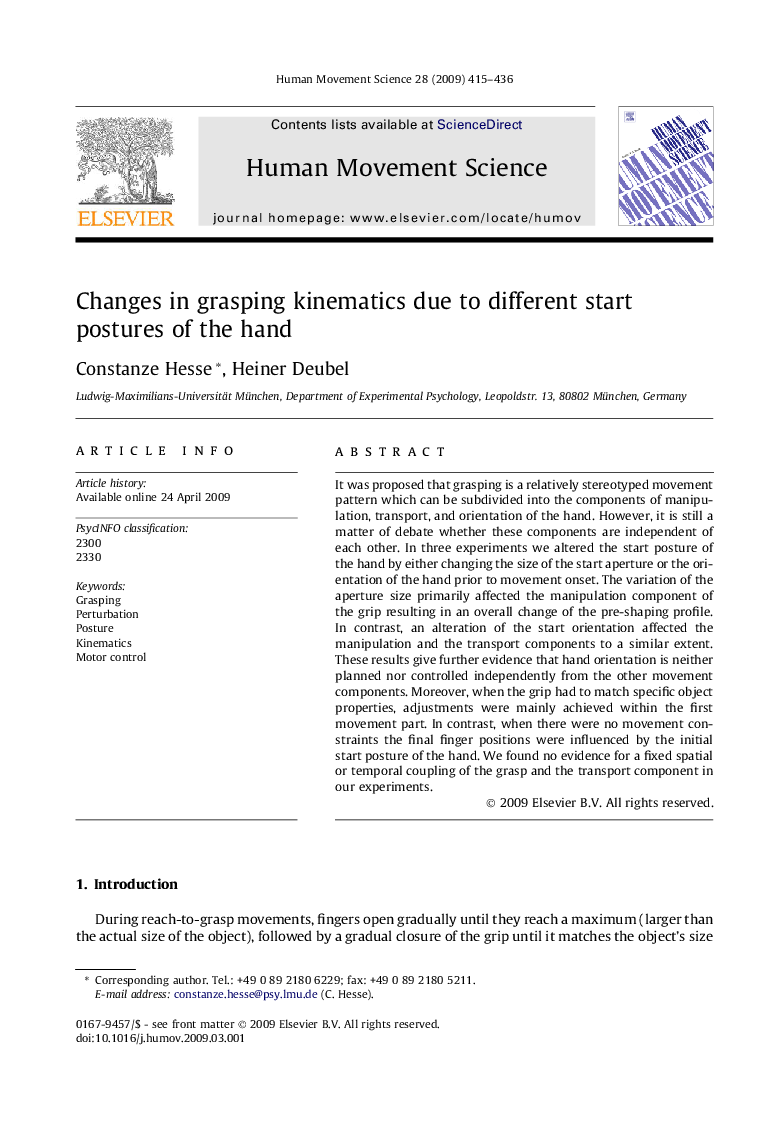| Article ID | Journal | Published Year | Pages | File Type |
|---|---|---|---|---|
| 928790 | Human Movement Science | 2009 | 22 Pages |
It was proposed that grasping is a relatively stereotyped movement pattern which can be subdivided into the components of manipulation, transport, and orientation of the hand. However, it is still a matter of debate whether these components are independent of each other. In three experiments we altered the start posture of the hand by either changing the size of the start aperture or the orientation of the hand prior to movement onset. The variation of the aperture size primarily affected the manipulation component of the grip resulting in an overall change of the pre-shaping profile. In contrast, an alteration of the start orientation affected the manipulation and the transport components to a similar extent. These results give further evidence that hand orientation is neither planned nor controlled independently from the other movement components. Moreover, when the grip had to match specific object properties, adjustments were mainly achieved within the first movement part. In contrast, when there were no movement constraints the final finger positions were influenced by the initial start posture of the hand. We found no evidence for a fixed spatial or temporal coupling of the grasp and the transport component in our experiments.
